














Itwaswhilesharingarecentarticlewehadreadonwomen’s livesunderTalibanrulethattheideaforthisAutumnEdition’s themecametous.Thesewomen,nowunabletospeak outsidetheirownhomeforfearofarrest(orworse),could neithervoicenorshareanydetailabouttheirlife–howeverbig orsmall–withanyone.
Maybewespeakformanyofyouwhenwesaythatweoften forgethowprivilegedwearetohavethatopportunitytospeak andshare.It’ssoeasytotakesomethingso‘basic’forgranted. That’swhywebelieve“OurLives,OurVoices”istheperfect themeforthisedition,onewhichwerealisedunintentionally chroniclesarangeofallourjoysandstrugglesasyoung peopleandgirls.Becauseitdoesn’tmatterwhetherwe're speakingoutaboutthecatcallingwefaceonthestreets, expressinghownavigatingtheever-impossiblemazeofbeauty standardsmakesusfeel,orevenjustravingaboutthemusic albumsofthemoment,we’reallconstantlygivingvoicetoour lives.Whatmakesuslaugh,whatmakesuscry–ourwhole, full-onInsideOut2setofadolescentemotions.
Andthere’snothingmorepowerfulthanthat.
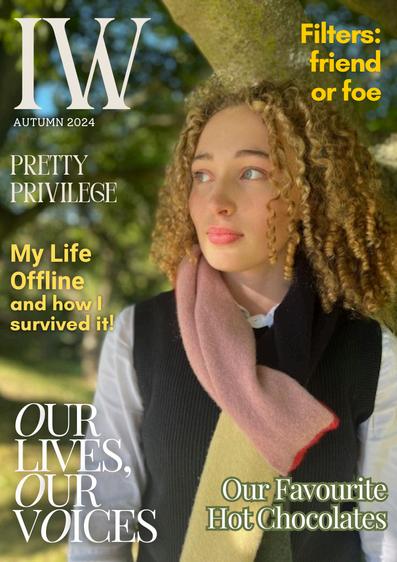
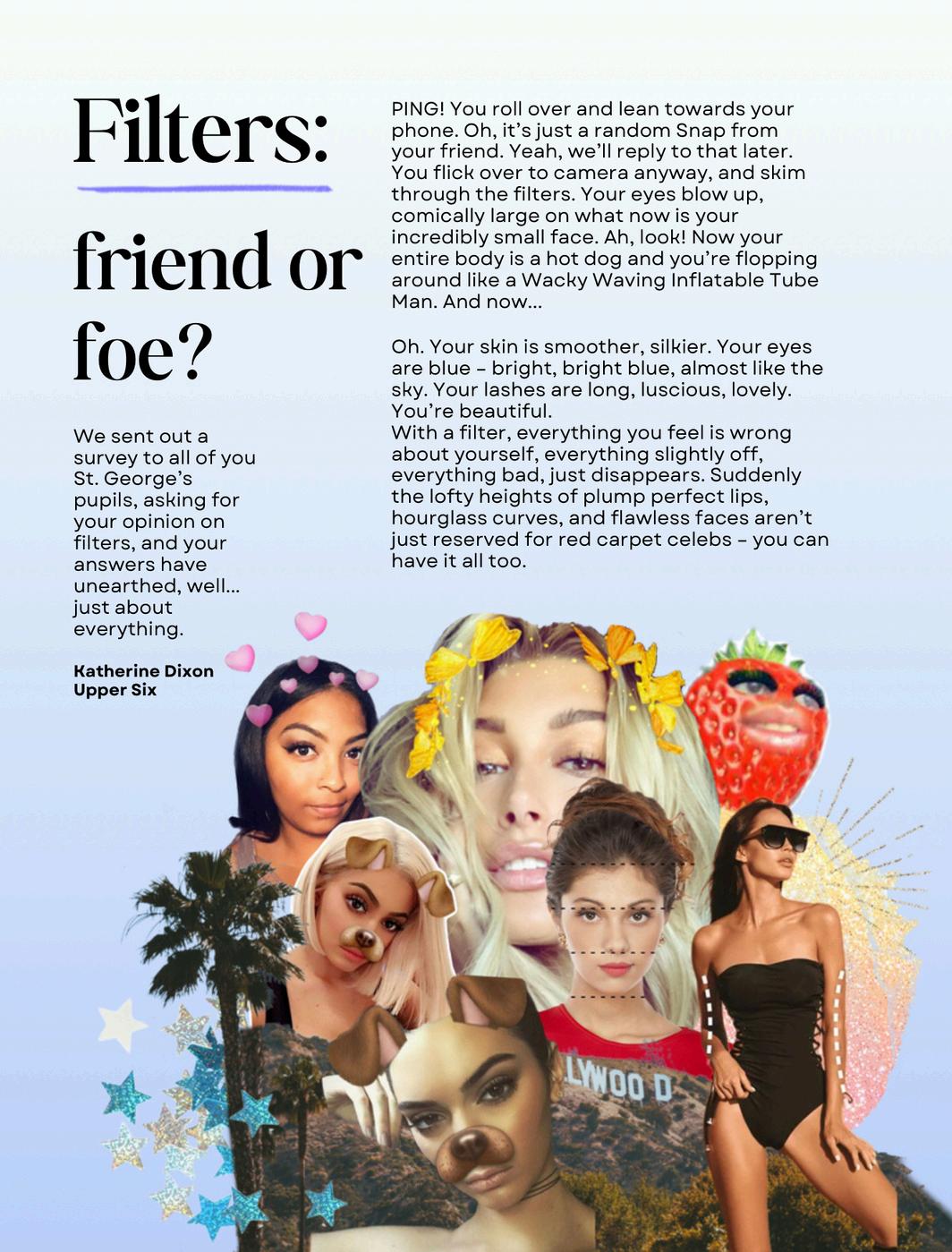
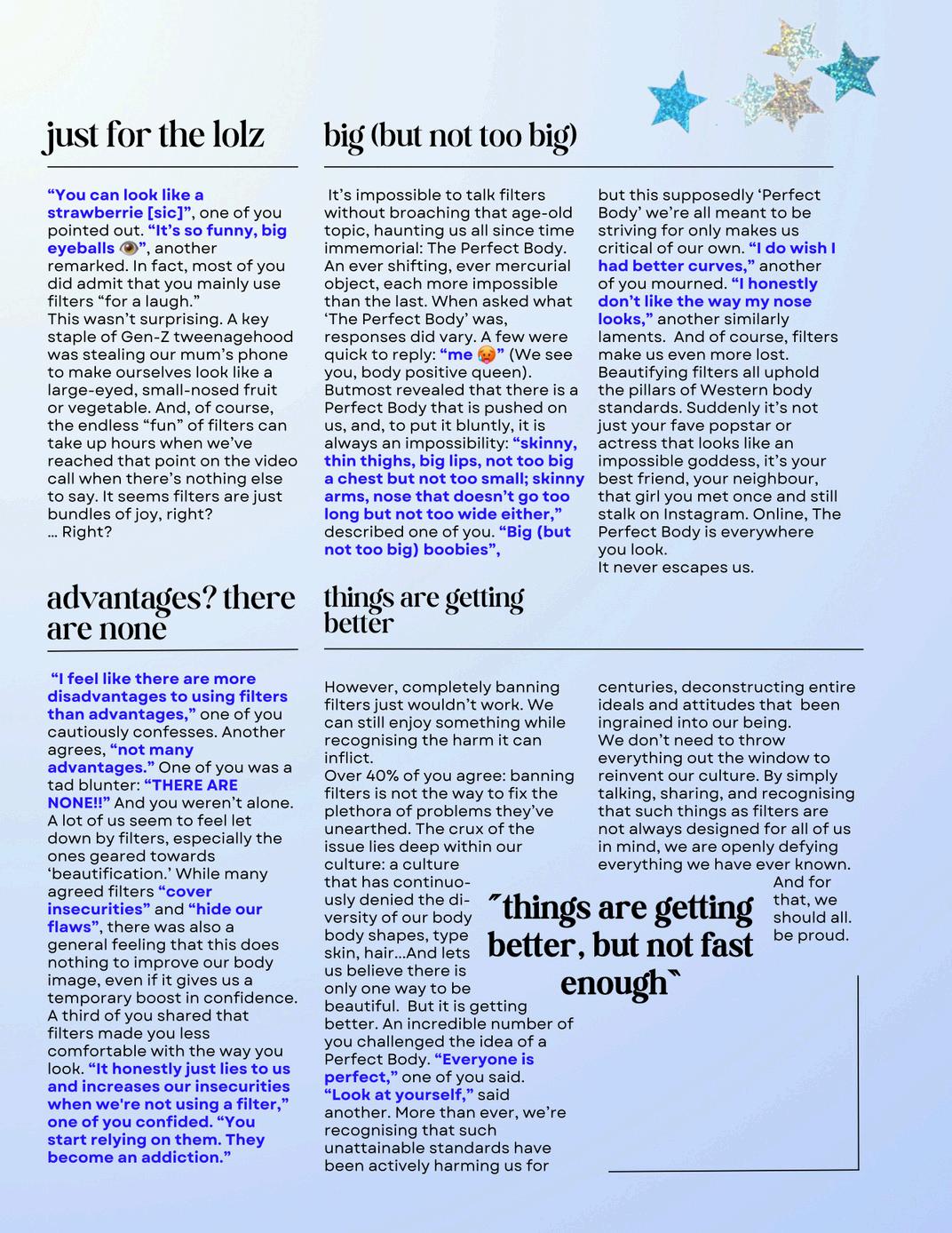
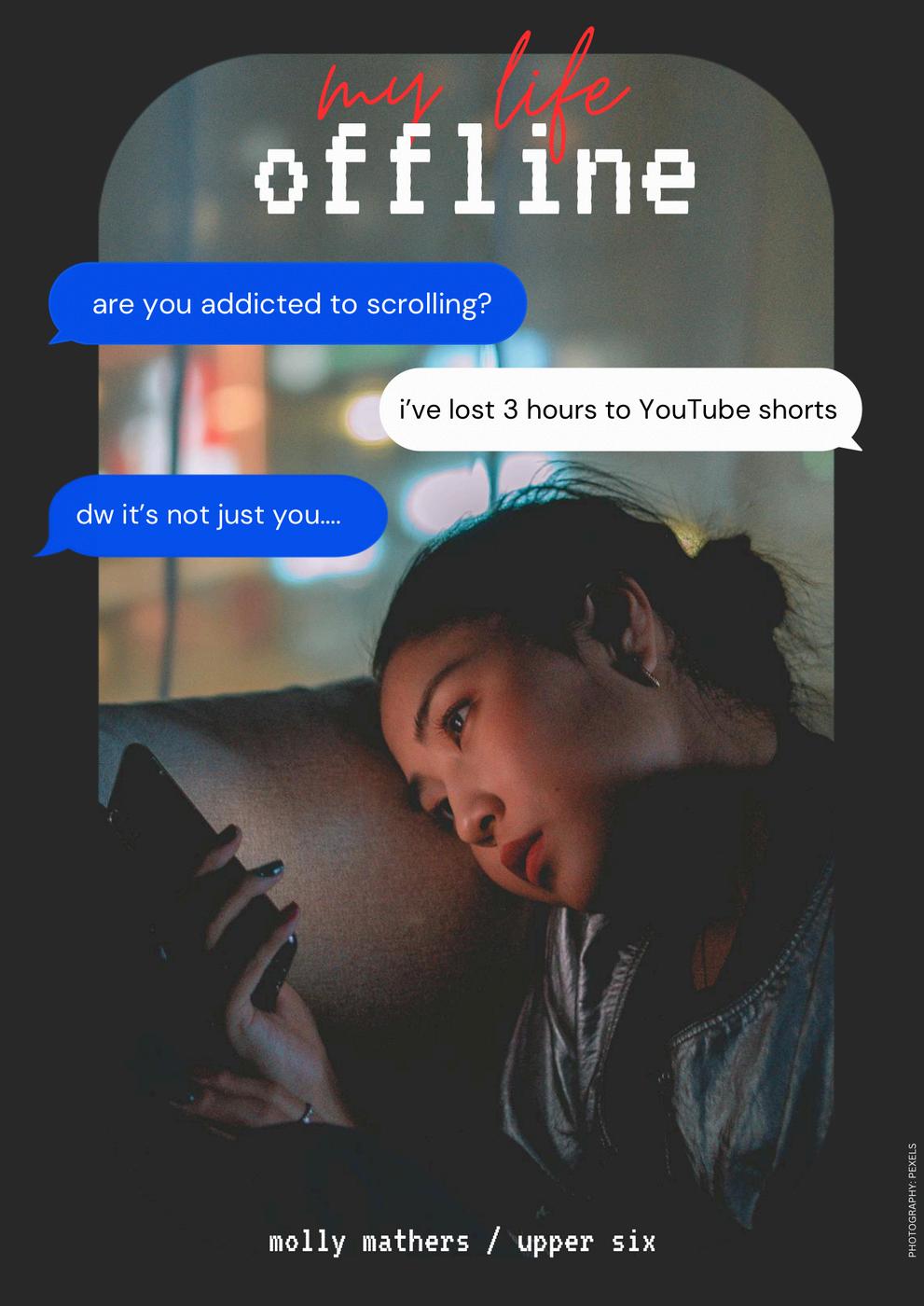
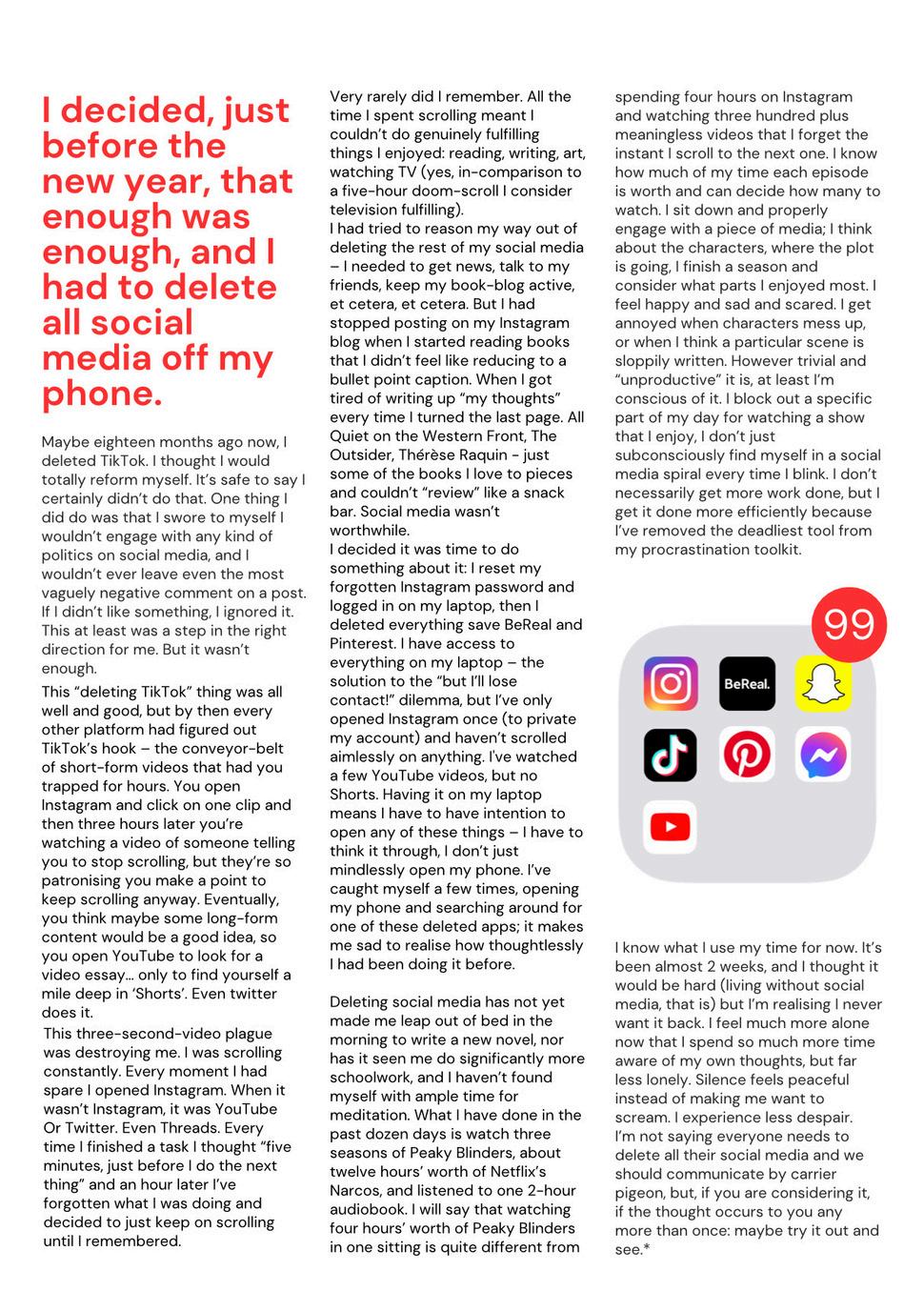

This is something we hear constantly - but how true is it? How far can beauty actually take you? Far, it would seem. We call it ‘pretty privilege’ - the unearned advantages of physical attractiveness.
Physically attractive people have been proven to earn 15% more than people who are considered ‘not pretty’. This is appalling and completely unacceptable. The data also uncovered that pretty people are more likely to be hired and promoted. Similarly, a student’s appearance in the classroom can also impact their grades. In 2017, a study revealed that female students earned lower grades in online courses than they did in face to face classes. These findings match a study from 2022. This feels to me like ‘choosing a book by its cover ’ . Just because one has perfect eyes and a button nose does not mean that they are smart; just because one has shiny hair does not mean that they are hard working; and just because one has a good smile does not mean that they have a good heart! You have to read all the pages before you can judge the book
Let’s take a deep breath and talk about how pretty privilege affects how you are seen as a person. Pretty people are perceived as smarter, funnier, kinder and healthier Pretty people ‘have the key to a door of opportunities, connections and choices which are shut, locked and barricaded to others’ writes Lilly Delmage of Glamour UK. Traits that were seen as annoying or socially awkward can suddenly seem attractive if you are seen as pretty. The geek becomes ‘smart’. The irritating chatterbox is ‘outgoing’. This really hits deep It’s like being pretty gives someone who looks at you or hangs out with you a coloured lens where everything you do is good or over-exaggerated in a positive way.
If we believe that character is more important than beauty then we can finally be judged by who we are rather than how we look Interestingly, ‘unconscious bias’ is now part of a suite of training courses run by mainstream businesses looking at diversity and equality. This must be a good thing. It is time to open our eyes and look through the outer packaging and value the content within for what it really is – a gift. Whether thin or round, pretty or plain, we all deserve an equal chance and a fair game.
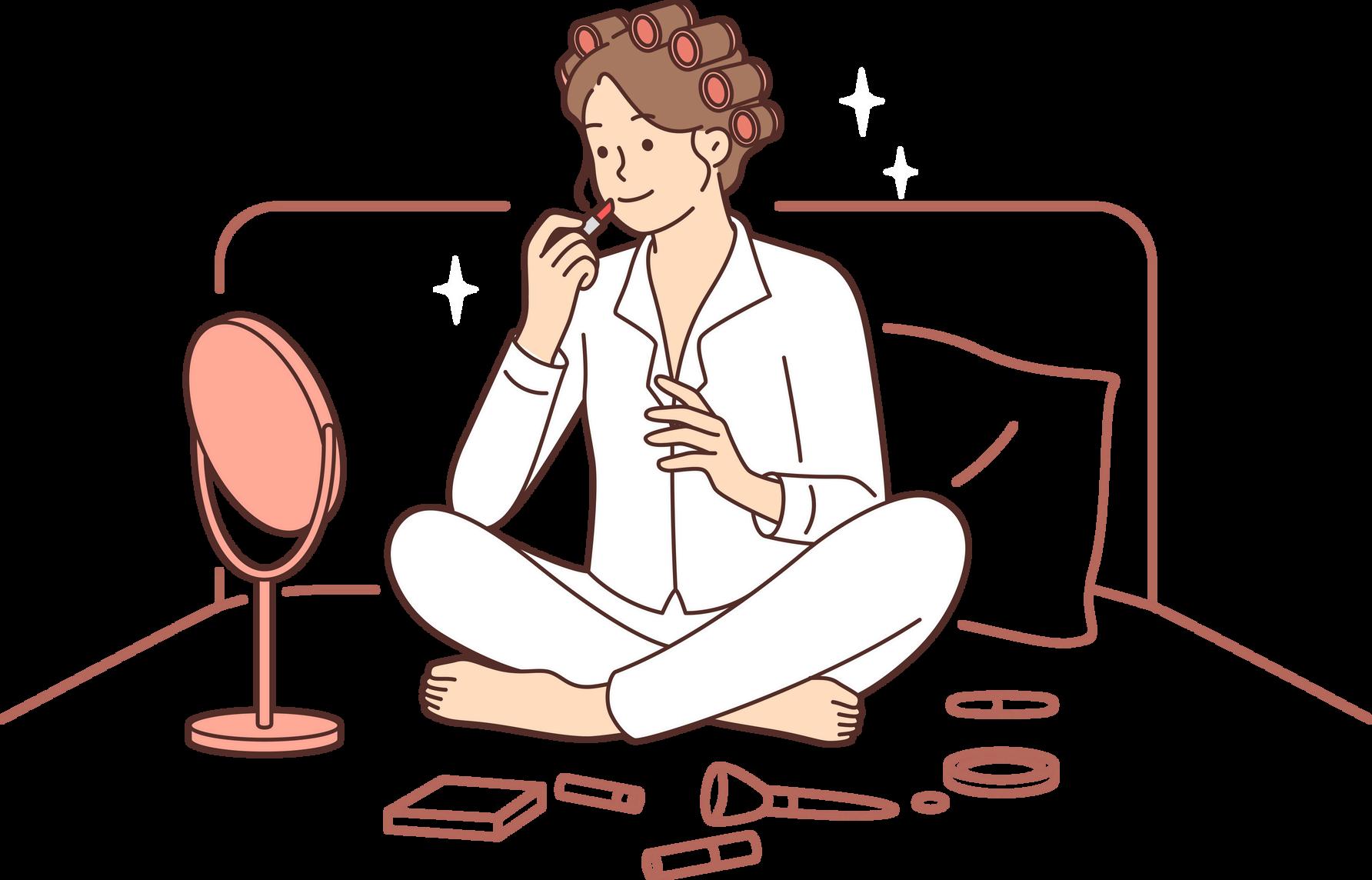
We all deserve al chance.
Society continues to fabricate the harsh reality of vaping
I will never forget stumbling across a group of young teenagers on a tram, whose faces were engrossed by bright illumination as air enveloped them with sweetsmelling clouds. All seemed well until the sounds of spluttering and coughing caught everyone ’ s attention. Serving as a stark reminder, the vibrant façade of these little pens of pleasure conceals a much darker and damaging secret. Initially promoted to help people quit cigarettes, it is evident that vaping has attracted a greater audience than anticipated. A 2024 survey by ASH (Action on Smoking and Health) reported that 18% of 11–17-year-olds had tried vaping, a staggering 980,000 children! Over half had tried once and 4.2% more than once a week. Furthermore, among non-smokers who use ecigarettes, 51% indicated that their primary reason for vaping was ‘just to give it a try.’ Following this, 18% highlighted peer influence as their main motivation, while 11% stated that they were drawn to vaping due to the variety of flavours available. E-cigarettes enable individuals to inhale nicotine through a vapour rather than smoke. Additionally, they don’t burn tobacco nor produce tar or carbon monoxide, two of the most damaging elements in tobacco smoke that could lead to COPD and Type 2 diabetes. That said, the long-term health effects of this vaping "epidemic" remain uncertain due to its recent
emergence, which is rapidly escalating concern, according to Dr. Mike McKean, Vice President of Policy for the Royal College of Paediatricians and Child Health.
We must remember that behind the statistics and scientific research, there are real people, like Kyla Blightt, a 17-year-old girl from Egremont, Cumbria, who has already suffered serious ramifications from her seemingly innocuous vaping addiction. Blightt, who appeared on Good Morning Britain in June 2024, bravely advocated for teenagers to avoid the peer-pressuring environment of vape culture by emotionally claiming: “it is not worth it at all!” expressing regret, and suggesting the truth behind vaping, concealed by societal expectation, could lead to severe consequences if
Thankfully, extreme consequences like this have not gone unnoticed by the government. In March 2023, former Prime Minister Rishi Sunak explained plans for a ban on disposable vapes, along with

what was once thought of as trendy and harmless activity has now manifested into a national crisis

restrictions on fruit-flavoured varieties and marketing. But will this be delivered effectively in the long term, especially with the brute force of our good old friend social media continuing to glorify vaping as an act of popularity?
What was once thought of as an on-trend and harmless activity has now manifested into a national crisis. The extensive research and mounting evidence clearly suggest that vaping poses serious health risks especially to us whose lungs are still developing. As we odern society, we must aused by e-cigarettes, and raise awareness, s to protect individuals knew a little pen could cause so much harm?


Recently, there seems to have been a sharp increase in songs rooted thematically in the troubles faced by people all over the world. But if you look only a few decades back, you’ll find that this has always been the case. Music and struggle have always been inextricably linked Turning to the rebellious musicians of the past, we can discover just how deep this relationship runs
Joan Chandos Baez was born in New York City in 1941, to a Mexican father and a mother from Edinburgh. As she grew up, she began playing guitar and singing folk music, and her professional career began following her appearance at Newport Folk Festival in 1959. Gathering a dedicated following due to her entrancingly pure soprano voice, she would go on to record over 25 studio albums, sticking mainly to folk, through dappling in genres such as country and gospel music. Her most successful songs include ‘Diamonds and Rust’, a bittersweet ballad telling of
Female musicians have been breaking boundaries for longer than you think
her failed relationship with fellow folkie Bob Dylan; and her rendition of The Band’s ‘The Night They Drove Old Dixie Down’, a tale of the last days of the American Civil War.
And she was never just a musician; she was an activist.
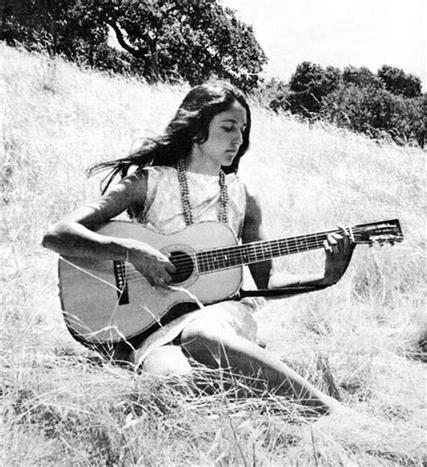
She never passed up the chance to have her voice heard – whether it was her staunch anti-war campaigning, or her friendship with Martin Luther King Jr. and their fight for
civil rights. She wrote and performed many protest songs; the highlight arguably being her 1973 composition ‘Where Are You Now, My Son?’, a 22-minute track, interspersed with poetry and singing, featuring recordings from her visit to North Vietnam that Christmas. Her most recent album was 2018’s ‘Whistle Down the Wind’, consisting of ruminative, acoustic interpretations of songs by writers such as Tom Waits and Mary Chapin Carpenter; a tasteful record to round off a prolific career – a career which not only changed folk music forever, but which has inspired many to find their voice and stand up for what they believe in.
Following a string of hits in the 1980s, Kate Bush was recently introduced to a new generation when her song Running Up That Hill (A Deal With God) became an unexpected and belated hit. I personally fell in love with the song when I was very
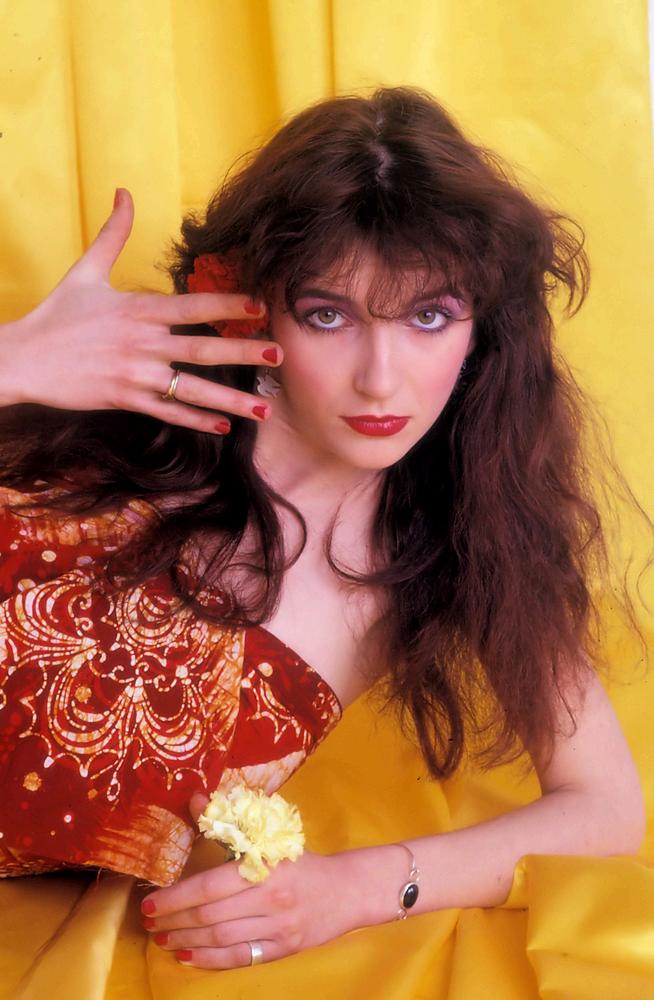
young – we had it on CD, and it was the soundtrack of countless road trips.
Catherine Bush, born in 1958, was musical from a young age, studying piano, organ, and violin. When she was 16, Pink Floyd’s David Gilmour noticed her talent and helped her record a demo tape, which got her a deal with EMI.
She shot to fame aged 19 with her debut single, ‘Wuthering Heights’, based on the Emily Brontë book of the same name. She has gained popularity for her often bizarre (but always remarkable) songs, coupled with her expansive vocal range, and her experimental musical style, both sonically and thematically. Arguably, her strongest songs are her most poignant ones. Her cathartic tearjerkers include ‘This Woman’s Work’, portraying the struggles of childbirth and motherhood, and ‘Army Dreamers’, a mother’s lament for a young soldier killed in action. In my opinion, her magnum opus is
“A career which has inspired many to find their voice and stand up for what they believe in”
‘Cloudbusting’, from 1985’s ‘Hounds of Love’. It’s about young boy remembering his father who has found a way to control the rain and has been taken away by the government.
Kate Bush made many contributions to the world of music. As well as an impressive musical legacy (with the likes of Adele, Elton John, Björk, and many more, expressing their admiration for the singer), she was the first artist, for instance, to use a wireless headset microphone – on tour in 1979, she found that holding a microphone interfered with her interpretative dancing, so a solution had to be found.
Despite preferring to stay out of the spotlight nowadays, Kate Bush has certainly left her mark on the industry. Pop music would surely not be the same without her.
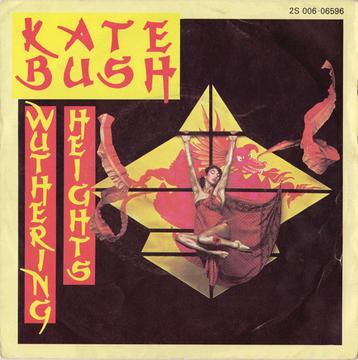
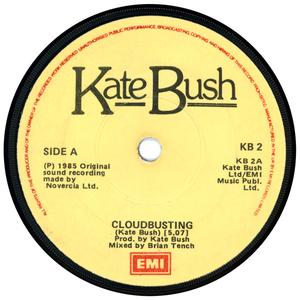
By Stella Whitworth
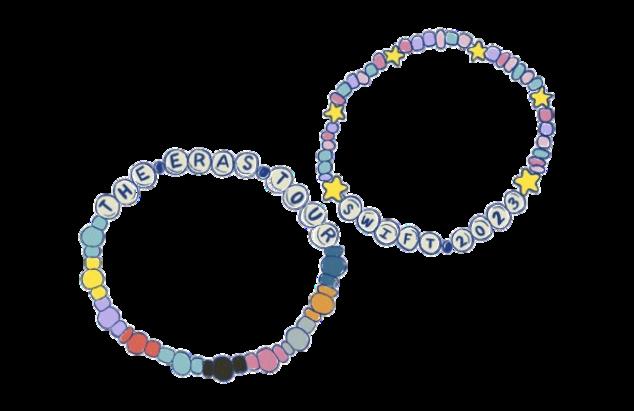
at this year has been Taylor Swift’s. In er historic fourth win of the highly coveted Grammy for Album of the Year, becoming the first artist ever to do so. But which T Swizzle AOTY are you? Take this quiz to find out...
1.Who’syourfavsinger(apartfromT-Swift,obviously)?
A EdSheeran:he’sjust Perfect
B.MileyCyrusbecausePartyintheUSA...duh?
C LanadelRey–I'madeepperson,whatcanIsay?
D.SZA:IwanttoKillBilltoo??
2.Yourbestiehasghostedyoucompletely:whatdoyoudo?
A.Cry...alot.Considerarson.Andthencontinuecrying.Alot.
B.Ihaveatonofotherfriends;whocares??
C Writesomeheartfeltpoetryabouttheordeal
D.Designanelaboratemastermindrevengeplan.Vigilantethatshizz.Thenholdagrudge. Forever.
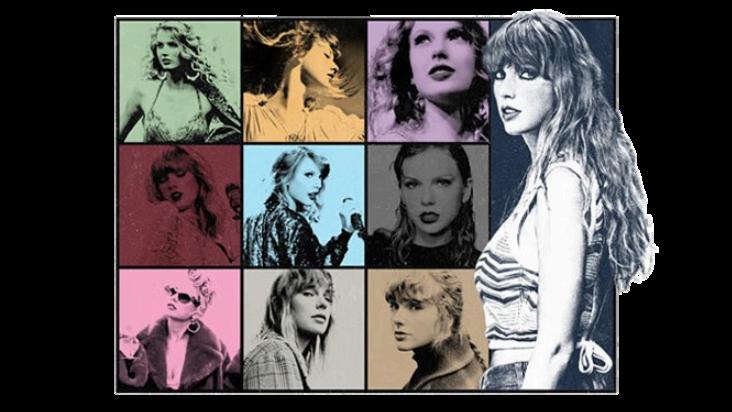
3.What’syourfavouritebookgenre?
A Anythingfantasyorromantic
B.Book?What’sthat?
C.Iwouldratherworkonwritingmyfuture NobelPrizewinningliterature
D.Allthemodernclassics;anythingGreat Gatsby-esque
4.It’sOwnClothesDay:what’syourgo-to fit?
A Acutedress(likelyfloral)andsomeUgg boots
B.Miniskirtandcroptop
C Maxidressandacardigan
D.Dark jeansandasparklytop
Ifyougot....
5.You’reoutwithfriendsandyoufancy somethingtoeat;wheredoyougo?
A.McDonalds.What?!It’scheap!
B.Thenewphorestauranteveryone’stalking about
C.Whydon’twestayathome?Iforagedsome mushroomsearlier
D HarveyNics:ithasthebestcocktails–sorry, mocktails
6.Andfinally,what’syourfavouritecolour?
A.Asunnyyellow
B.Skyblue
C GreybecauseIamprofoundlyprofound
D.Indigo

MostlyAs,you ’ reFearless Happy,sunny,andhopelesslyidealisticallyromantic:youarethe personificationofTaylor’shitsophomorecountryalbum.Withyou,every(To)day’saFairytaleand anabsoluteLoveStory:weallhopeyou’llneverChange.
MostlyBs,you ’ re1989.Theabsolutelifeoftheparty,you’rethepersonofeveryone’sWildest Dreams.YouwillquiteliterallynevergooutofStyle.Heartbreakmaybeyournationalanthem,but youalwaysShakeItOff.
MostlyCs,you ’ refolklore:The1aspoeticasWilliamWordsworthashesitsbyTheLakes Yoursoul istoodeepforthisworld;sometimesit’shardtobear,butjustkeeponThisIsMeTrying.
MostlyDs,you ’ reMidnights Glamour Darkness Bejeweled Allwordsthat canbeusedtodescribetheMastermindthatisyou.Youmaybethebitter Anti-Heroattimes,butatleastKarmaisyourboyfriend.Theepitomeof cool,youjustHitDifferent
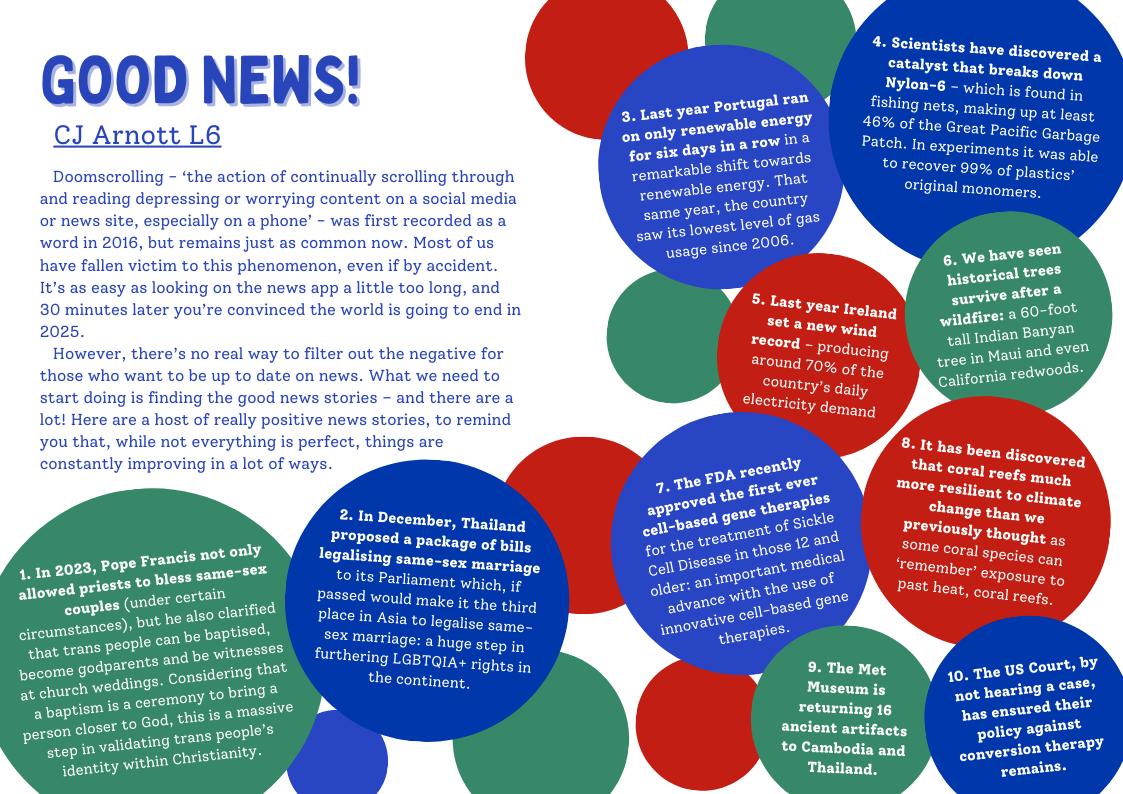


Iwasoncewalkingdownthestreet,andagroupofahalfdozenboysholleredatme.
Iwaswearingasemi-shortskirt,withsheertights,andredDocMartenboots. ManywouldtellmethatinthoseclothesIshouldjusthaveexpectedit,andI did.IsawthemacrossthestreetandwitheverystepIknewitwascoming.I knewandIwilledthemtowalkon,tolookaway,tonotnoticeme.Buttheydid. There are two things that make me remember this particular experience so clearly.First,mymumwaswithme–Iwasa15-year-oldgirlwalkingtothe chipshopwithmytall,slightlyscary,grey-hairedmotherbesideme.AndIgot cat-called.Bymyselfinthatoutfit,orwithafriend,I’dbemoreaccustomedto it.Butwithmymum?Thatwasdifferentterritory.Thesecondthingthatriled mewashowyoungtheseboysseemedtobe,theywerenoolderthanfourteen, andmostlookedabouttwelve.Bythatpoint,Iwasusedtobeingwhistledand staredatbyolderboysandsometimesgrownmen,butonesmylittlebrother’s age?Thatwasnew.
I’dbeencat-calledbeforethis.Theveryfirsttime,Ihadjustturnedeleven,and wasgoingonarunaroundthepark.Ilovedrunningandplayingsport.Iwasa swimmeraswell.Iwaswearing‘StarWars’printedleggingsandapinkzip-up hoodie.Aquestionablefashionchoice,butIwasachild.ThatwasthelastrunI ever went on. Soon afterwards I got my period, quit swimming, and stopped playinghockey.
You might wonder what this trauma has to do with running FemSoc at St George’s.“Whyhaveafeministsocietyinagirls’school?”isaquestionI’ve beenaskedwhenImentionit.ButIfeelthatthisquestionmissesthepoint.
No,wedon’tneedFemSocin thesamewayaschoolmightneedanLGBT+or BAMEsociety(fortherecord,wehavethosetoo).FemSocisaboutsomething slightlydifferentthanensuringinclusivity.Ofcourse,girlsareincludedhere, that’skindofthewholeidea,butthisschoolisnottheworldand–nowthis mightshockyou–weexistoutsideit.
Feminismisn’tjustaboutequalityinthestatistics,butalsothedaytoday, mundane,misogynythatwe’vebecomesousedtothatmostofushavegiven upcaring.DoingsomethingaboutharassmentlikewhatI’vejustdescribed requires you to care, and caring about it requires you to acknowledge it. Acknowledgingithurts.
Giving girls a place to feel seen and come to terms with the world aroundthemiswhatIbelieveFemSocisfor.Dealingwithitalone–whetheritsfirst-handexperienceorhearingaboutsomeoneelse’s–is terrifying.Talkingaboutfeminism–whatitmeans,whoit’sfor,and why–makestheseissueseasiertolivewithandtochallenge.
Iwantpeopletobeabletoleavetherelativesafetyofagirls’schoolandhave the confidence in themselves to demand respect from society. You can’t challenge harassment and disrespect until you have enough inner confidencethatfemininitymakesyounolessdeservingofdignitythanany man.
Tome,thisiswhatFemSocisabout.Theworldbeyondschoolisascary oneandforalunchtimeclubtohavethepowertomakethatworldjusta littlelessintimidating?That’sprettycool.

The evolution of Artificial Intelligence (AI) has been a captivating journey, marked by advancements that propel machines towards unprecedented levels of intelligence. Here we dissect the key factors contributing to AI's increasing intelligence and the technological strides that have transformed the landscape of AI research and application.
At the core of AI's march towards greater intelligence lies the paradigm shift from traditional rule-based systems to the dynamic field of machine learning. This change enabled AI systems to learn from vast datasets, adapt to novel scenarios, and enhance their performance over time. The ability to learn and evolve represents a fundamental building block in the quest for more intelligent AI.
A pivotal moment in AI's journey was the rise of neural networks and deep learning. Inspired by the intricate architecture of the human brain, these technologies allow AI systems to process and understand complex patterns within data. The depth and complexity of neural networks help machines to excel in tasks that were once deemed insurmountable.
As AI continues to evolve, the concept of transfer learning has emerged as a key strategy for developing its intelligence.

Transfer learning involves training AI models on a broad dataset for a general task and subsequently finetuning them for more specific applications. This approach enables AI to transfer acquired knowledge from one domain to another, fostering adaptability and improving performance: a significant leap in AI's cognitive capabilities.
The trajectory of AI's intelligence is marked by these four transformative systems. As we stand at the forefront of AI's evolution, it is evident that these advancements are not only reshaping the technological landscape but also posing challenges that demand ethical consideration and responsible development, such as the use of AI to complete academic assignments. AI has become so advanced that they can write comprehensive pieces.
In fact, most of this article was written by an AI.
Could you tell?
Cara Walker (L6)

Autumn is definitely the time of year to start hibernating and this round up of books, films and podcasts might help you to choose your next favourite thing...
Ariel by Sylvia Plath is a meaningful and thoughtprovoking book that covers a wide range of topics including motherhood, nature and death. It is a window into the notorious poet's mind, and shows the reason so many people are fascinated by her and enamoured with her works. The poems Lady Lazarus, Tulips, and A Birthday Present specifically left a lasting impact on me. I would definitely recommend this book to anyone interested in poetry and Sylvia Plath This book made me more interested in her life and work, and I continue to find out new things about her due to this book.

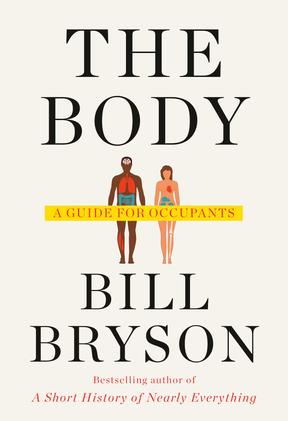
When my dad bought me this serious sounding book, I admit I was a bit disappointed. But that didn't last long, because as soon as I turned the first page I knew that this was no ordinary, boring, science book. This book made science interesting, even the tiniest little things. I suppose this book taught me that even the things that seem boring can be interesting. I would really recommend this book - it is brilliant!
Clara, Lower 5

Social media is a stressful place Trying to figure out the truth behind what you see online is tricky Why Do You Hate Me? slows down the lightning-fast fire of short-form content and helps make sense of the scandals Each week Marianna Spring dives into her inbox of trollers and pulls apart the polarisation, putting it back together for the listener to make sense of
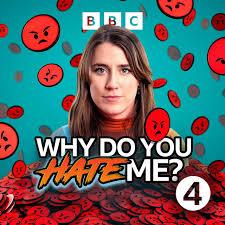

SomethingWICKEDthiswaycomes. Much loved and most ‘Popular’ musical finally makes it to the big screen in November If you love a little Oztentaion, then go green and have a fantastically wicked night out!
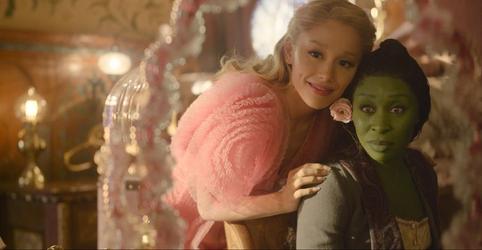
In cinemas November 7
Hello, hot chocolate lovers. And hot chocolate haters, although this probably isn’t the article for you. For this article we were tasked to try as many different kinds of hot chocolate as we possibly could in one week and rate them together. However we were forced to each review them separately as we realised we all had extremely different thoughts on how the ideal hot chocolate should taste. Before we begin, here’s a quick outline on what each of us are looking for:
Charlotte – Chocolatey and not too sweet
Amber – Very sweet
Kelsie – Really just fine with anything so long as it is hot chocolate
To ensure a fair test, we had all of them with milk and 1 and a half teaspoons of powder and took notes while we drank them. Here are the results.
Galaxy
(£3 50 at Tesco)
Charlotte – Too sweet, not enough chocolate 3/5
Amber – It's fine. Doesn’t really taste of anything though. Maybe that’s my fault for not stirring it enough but it’s just sort of fine. 3/5
Kelsie – chocolate milk, lovely 5/5
Average of all our scores – 3.7/5
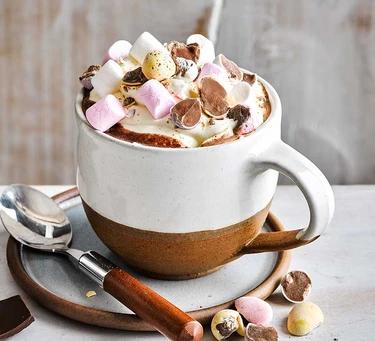
(£4 50 at Tesco)
Charlotte – acceptable but quite sweet and less chocolatey than some – 3/5
Amber – Good. The classic hot chocolate. Sweet but not too sweet. I like them quite sweet, though – 4/5
Kelsie – chocolate and milk, sweet again – 5/5
Average of all our scores – 4/5
Instant Hot Chocolate Drink
(St George’s Brand)
Charlotte – Very nice chocolate flavour but a touch too sweet, however would drink again. - 4/5
Amber – Good. Brilliant. Actually genuinely sweet, not just like, weird tea. - 5/5
Kelsie - Chocolate, milk, creamyish5/5
Average of all our scores – 4.7/5OUR WINNER!
That’s it from us hot choc fans. Happy drinking! 23

